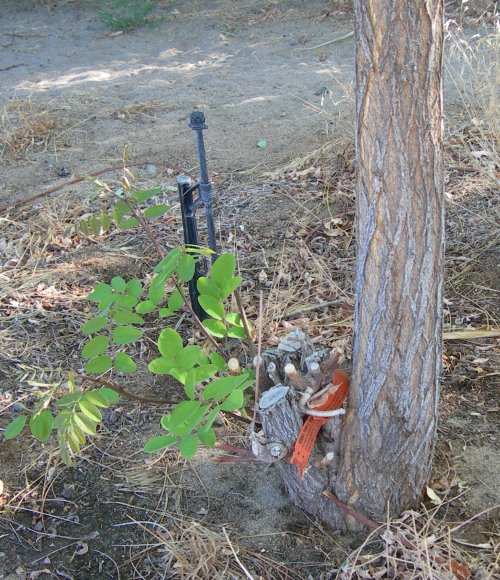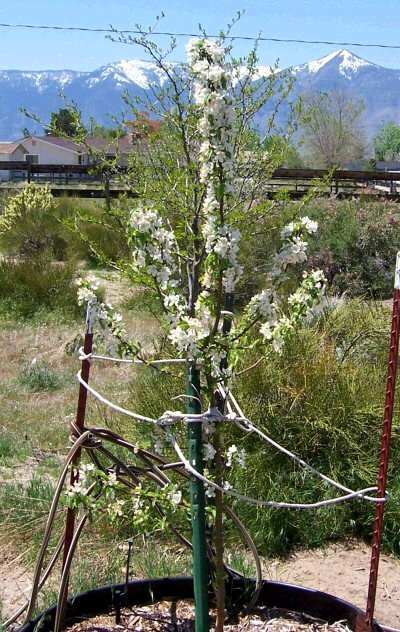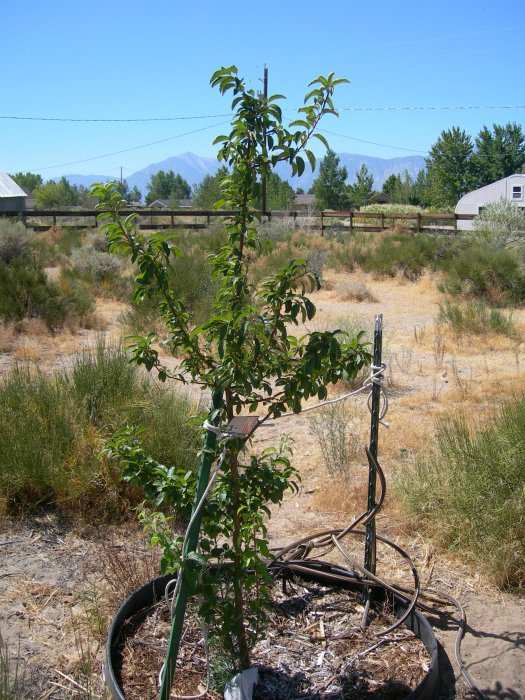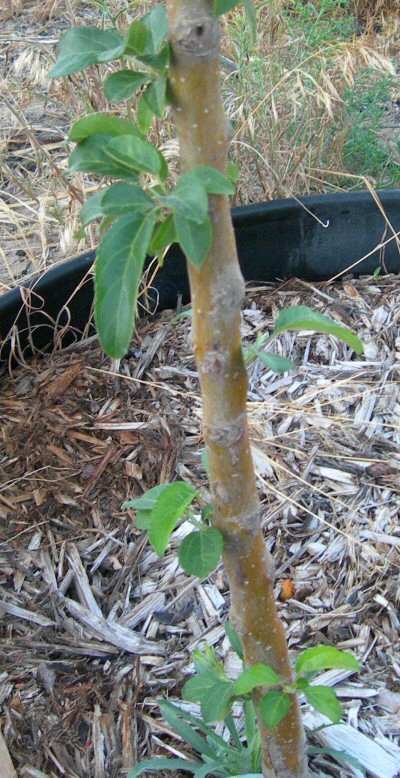

I decided to see what the home improvement stores had in stock
at the end of the growing season.
I found a nice looking locust for a mere $14.95.
The tree looked to be in good shape but you could peel the bark
off with your thumb nail.
I knew this tree would grow in Northern Nevada. I figured if the
trunk died over winter but the roots grew and expanded, the roots
might send up some new growth.
That is exactly what happened.
The main trunk (all eight feet of it) died.
The following spring four new trunks came up.
I cut the three smallest trunks at the end of the growing season.
The following year I had six foot tree with nice, thick bark.
Now if we can get past year two..........
The tree is ten to twelve feet tall
It sends out suckers all over the place, produces seed pods
and is rather thorny.
It also produces a profusion of white flowers in the spring.
White I say? Didn't I buy a Purple Robe Locust so I could
have more Wisteria-like flowers in the spring?
Well yes........that was the general plan.
Remember we are dealing with left over stock from home improvement stores.
Tags fall off over time and how much attention do you suppose the summer
help pays to reinstalling tags?
For $14.95 I suppose I can deal with the fact that I am the proud owner
of a White Robe Locust.
It is over three years old and so far, it's still alive!
Footnote: There is another opinion on this: Click Here





